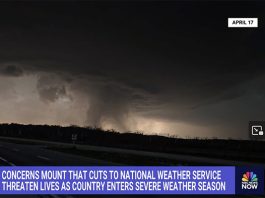
After spending 30 years in the car business, Brent Durham knew what he wanted to do when he retired: hunt. So, in 2012, he came back to his family’s roots in Clay County, Texas, to purchase a 5,000-acre ranch, a portion of which his family homesteaded in the 1880s.
“I was a quail hunter before I was a rancher,” he says. “I bought this place because I wanted wildlife habitat.”
But he also knew the important role that grazing plays in creating wildlife habitat. “One of the worst things I have seen happen to good quail country is to take livestock off it,” Durham says. “Quail and turkey can’t get through waist-high grass. Cattle can be an excellent tool for managing quail habitat, and really almost all wildlife habitat for that matter.”
Today Durham says, “I’m managing the ranch not just for my five-foot-tall cows, but also for quail that are only four inches tall. With the high-intensity grazing, the cattle come into a pasture and eat what they can – or tromp what they don’t eat into the ground. This adds organic matter that improves soil quality, promotes plant diversity and keeps the plants in a vegetative state, which wildlife like. Cattle grazing then leaves a visible path for dove, turkey, and quail to come in and forage behind them.”

Improving Habitat With Help
Durham says when he bought the property it was overgrazed and in “pretty bad shape.” He headed to the local USDA Service Center to visit with conservation specialists with the Natural Resource Conservation Service (NRCS). Together, they worked on a conservation plan that helped Durham determine stocking rates for his land, and address mesquite overgrowth and erosion problems in areas that didn’t have plant cover. Durham also enrolled in the Conservation Stewardship Program (CSP).

The CSP is one way to keep wide-open spaces open by providing financial assistance to landowners to meet their own conservation goals. In Durham’s case, he could gear his conservation efforts toward wildlife while still improving production for his cattle operation. It helped him add wildlife escape ramps to his livestock watering facilities, plant quail food plots with a crop rotation system that includes milo, sunflowers, and radishes, and implement an intensive rotational grazing system to benefit quail habitat. Durham divided his ranch into over 60 pastures, grazes several hundred head of cows on 30 to 50 acres for one to two days each.
“Ever since I started this intensive rotational grazing through CSP, I have definitely seen the quail numbers come up. I am just seeing so many great things happen on the land with this high-intensity grazing system. The improvement in my grasses and pounds per acre has been really dramatic since I changed to this system three years ago.”
Durham says he wanted to have high-intensity grazing on the ranch, but thought it was going to take a lot longer to get it done. “The financial assistance with CSP helped me speed up that plan and get it accomplished much sooner than I ever imagined.”

Joining Forces With Like Minded Folks Improves Results
“Private landowners here have a long history of working with us to make habitat improvements to increase quail populations, as well as other wildlife species,” says NRCS’ District Conservationist Kenny Prewitt.
Area landowners’ commitments to conservation are reflected in the number of farmers and ranchers who worked with NRCS office to voluntarily develop conservation plans on over 100,000 of the county’s 700,000 acres. Clay County landowners currently have over 51,000 acres enrolled in CSP.
Their efforts caught the attention of University of North Texas (UNT) Assistant Professor Kelly Reyna. Reyna is the executive director of UNT Quail, a nationally recognized wildlife program that fosters sustainable quail populations through innovative research, conservation, and education. Working with six Clay County ranchers, including Durham, to create the North Texas Quail Corridor. They make up 100,000 contiguous acres in Reyna’s research program in the corridor, which is now one of the largest quail conservation efforts in the nation, covering more than 2 million acres. “These ranchers have exceptional conservation ethics,” Dr. Reyna says of Durham and his neighbors. “They understand that they can have good stewardship and make money on the land.”
What Can You do With This?
Brent Durham provides a good example of how clear goals can be the foundation of a successful grazing plan. Your goals may be different, but ensuring that you know where you’re going can make it so much easier to map a path to get there.
Durham was also successful because he found help. The financial and technical assistance provided by his local Natural Resources Conservation Service office moved him along much more rapidly than he could have done on his own. Soil and Water Conservation District and Cooperative Extension Service staffs can also assist graziers with grazing plans, fencing and water system designs and more.
Finally, Durham’s work shows us that grazing for wildlife can be a recipe for success for one and all. It’s a helpful message for those questioning the value of grazing livestock.





